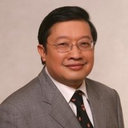Anthocyanin composition of wild bananas in Thailand.
キーワード
概要
Anthocyanins were isolated from male bracts of 10 wild species of bananas (Musa spp. and Ensete spp.) distributed in Thailand. Six major anthocyanin pigments were identified by high performance liquid chromatography (HPLC), mass spectrometry (MS), and tandem mass spectrometry (MS/MS). They are delphinidin-3-rutinoside (m/z 611.2), cyanidin-3-rutinoside (m/z 595.8), petunidin-3-rutinoside (m/z 624.9), pelargonidin-3-rutinoside (m/z 579.4), peonidin-3-rutinoside (m/z 608.7), and malvidin-3-rutinoside (m/z 638.8). On the basis of the types of pigment present, the wild bananas can be divided into 5 groups. The first group comprises M. itinerans, Musa sp. one, Musa sp. two, and M. acuminata accessions, which contain almost or all anthocyanin pigments except for pelargonidin-3-rutinoside, including both nonmethylated and methylated anthocyanins. The second group, M. acuminata subsp. truncata, contains only malvidin-3-rutinoside while the third group, M. coccinea, contains cyanidin-3-rutinoside and pelargonidin-3-rutinoside. The forth group, M. acuminata yellow bract and E. glaucum do not appear to contain any anthocyanin pigment. The fifth group consists of M. balbisiana, M. velutina, M. laterita, and E. superbum which contain only nonmethylated anthocyanin, delphinidin-3-rutinoside, and cyanidin-3-rutinoside. Total anthocyanin content in the analyzed bracts ranged from 0-119.70 mg/100 g bract fresh weight. The differences in the type of anthocyanin and variation in the amounts present indicate that wild bananas show biochemical diversity, which may be useful for identifying specific groups of bananas or for clarifying the evolution of flavonoid metabolism in each banana group.


